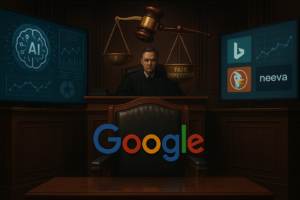Tackling the Dark Side of AI: Combating AI-Generated Child Exploitation Content
As the capabilities of artificial intelligence expand, so do the challenges associated with its misuse. Law enforcement agencies are on high alert as AI-generated child exploitation content threatens to undermine societal safety and justice.
The rapid advancement of artificial intelligence has transformed numerous sectors, fostering innovation and efficiency. However, this technological evolution has also given rise to a darker side that has raised alarm bells across law enforcement and regulatory bodies worldwide. Among the most pressing concerns is the emergence of AI-generated child sex abuse content, a disturbing trend that is prompting U.S. federal prosecutors to intensify their efforts to combat this heinous crime.
Recent investigations have revealed a troubling pattern: perpetrators are leveraging AI tools to create and disseminate content that exploits vulnerable children. This trend is particularly alarming as it not only poses a significant risk to the safety of minors but also presents unique challenges for law enforcement agencies tasked with identifying and prosecuting offenders. Authorities are increasingly worried that the ease of generating such content could lead to an overwhelming volume of abusive material flooding the internet, complicating efforts to monitor and eradicate these crimes.
The U.S. Justice Department has acknowledged the gravity of the situation, emphasizing the need for a robust response to counteract this emerging threat. Prosecutors are now focusing on developing legal frameworks and strategies that specifically address the implications of AI-generated content in the context of child exploitation. This includes:
- Advocating for stringent regulations on the use of AI technologies.
- Exploring ways to enhance the capabilities of law enforcement agencies to detect and analyze AI-generated materials.
Furthermore, experts are calling for a collaborative approach that involves technology companies, legal professionals, and child protection advocates. By working together, stakeholders can:
- Establish best practices for the ethical use of AI.
- Develop advanced detection mechanisms to identify and remove harmful content from online platforms.
This collaborative effort is crucial in curbing the proliferation of AI-generated child exploitation materials and ensuring that those who perpetrate such crimes face appropriate legal consequences.
In addition to immediate legal measures, there is a growing recognition of the importance of education and awareness surrounding the ethical implications of AI. As society grapples with the consequences of AI misuse, it is vital to foster a culture of responsibility among developers and users of these technologies. By instilling a strong ethical framework, we can mitigate the risks associated with AI and promote its use for positive societal impact.
As we navigate the complexities of AI, it is imperative to remain vigilant against those who would exploit its capabilities for nefarious purposes. The rise of AI-generated child exploitation content is a stark reminder that, while technology can serve as a force for good, it also carries the potential for grave harm. By prioritizing a comprehensive approach that involves regulation, collaboration, and education, we can work towards safeguarding our most vulnerable populations from the dangers posed by AI misuse.


